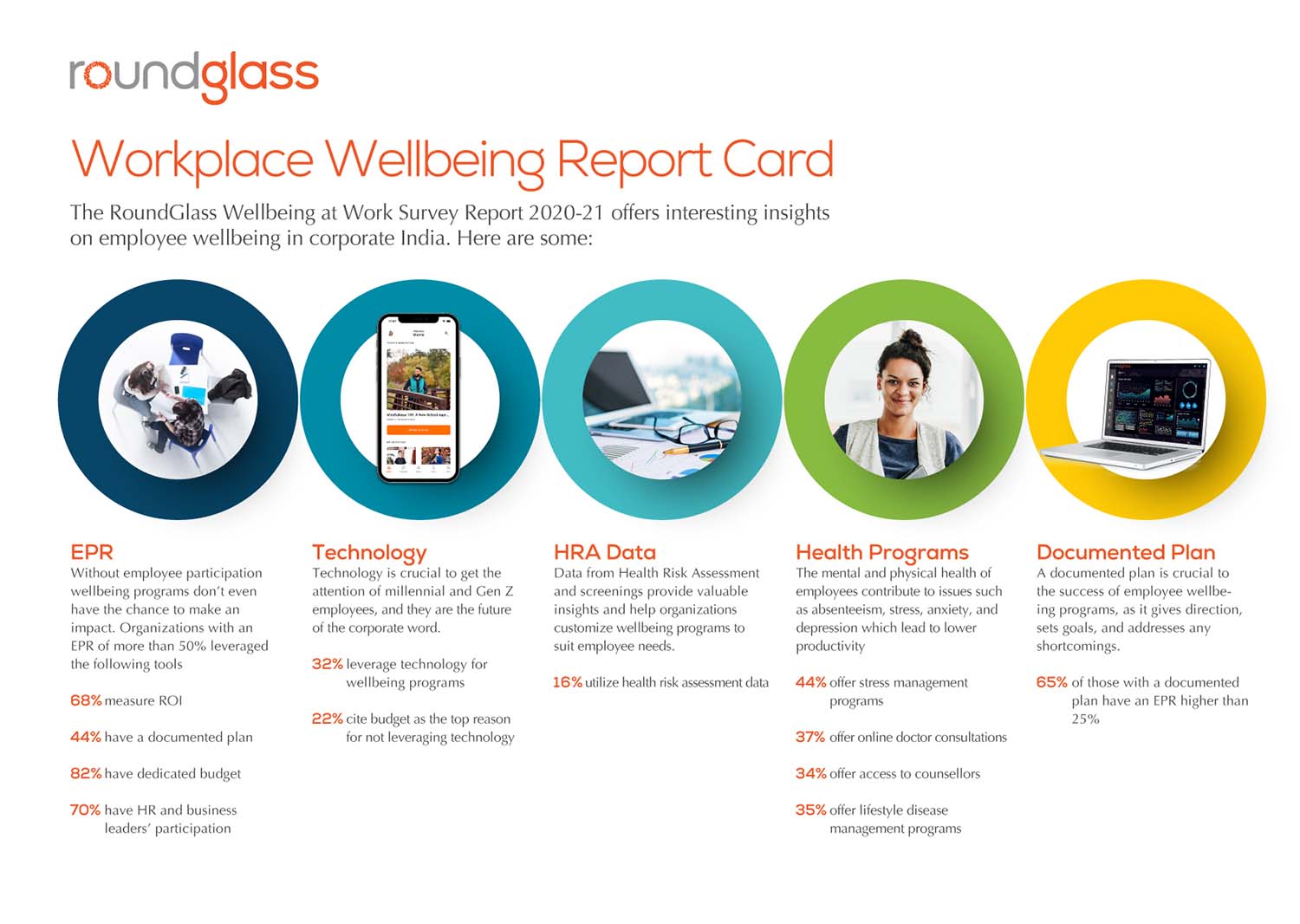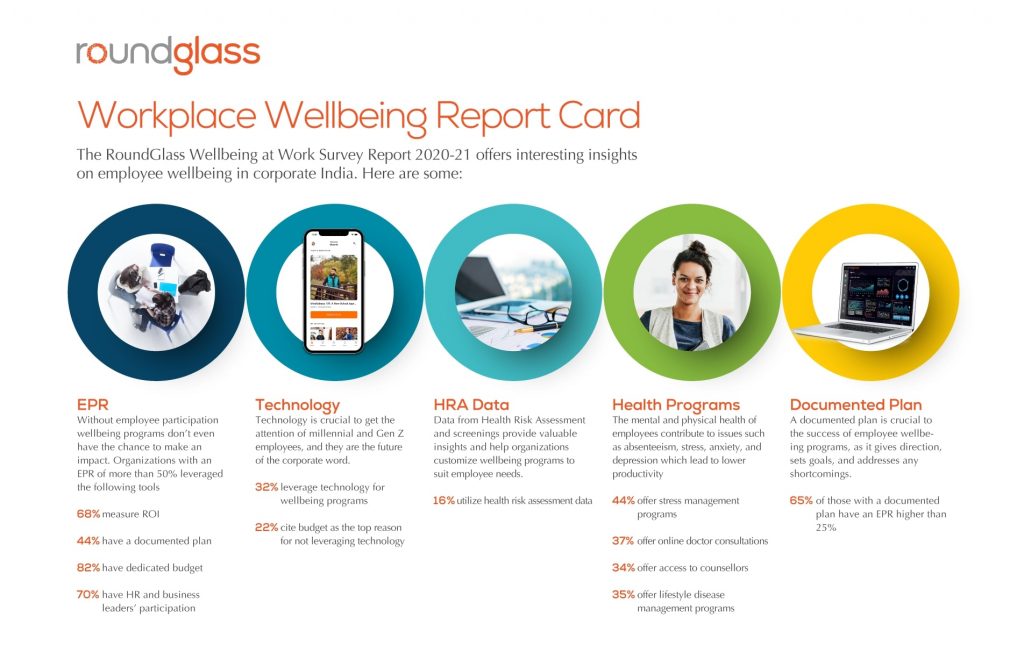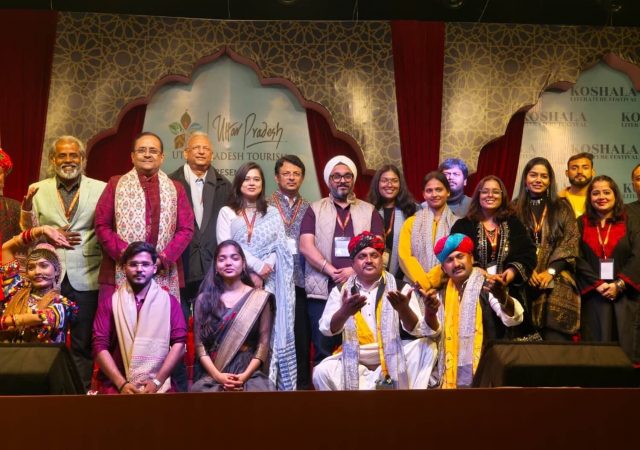HR leaders should focus on ‘Wholistic Wellbeing’, use data and technology to enhance employee wellbeing
• The third annual RoundGlass Wellbeing at Work Survey Report, based on interviews with over 400 leaders across 15 industries, offers a roadmap for effective corporate wellbeing programs
• The survey report was released on June 24 at a virtual fireside chat — ‘Democratizing Wellbeing at the Workplace’ — with corporate leaders from diverse industries as panelists
• Organizations should focus on ‘Wholistic Wellbeing’ and implement a plan that is documented, has a dedicated budget and team, and leverages technology
RoundGlass, a global ‘Wholistic Wellbeing’ organization, released its third annual flagship report — the Wellbeing at Work Survey Report 2020-21 — today. The report aims to be a roadmap for corporate India, especially for HR leaders, looking to design and implement effective workplace wellbeing programs. According to the report, more than 50% of organizations offer benefits such as health screenings and health awareness or meditation sessions to their employees — a big shift from the days of basic company health insurance and gym memberships. The survey further reveals major opportunity areas in corporate wellbeing programs.
The report was released at a virtual fireside chat in which senior corporate leaders from different industries discussed ‘Democratizing Wellbeing at the Workplace’ with Sunny (Gurpreet) Singh, Founder, RoundGlass; Prakriti Poddar, Global Head, Mental Health and Wellbeing, RoundGlass, was the moderator for the discussion. The panel included Pramod Bhasin, Chairman, ICRIER, Founder, Genpact Ltd, and Chairman, Clix Capital; Vikram Shroff, Director, UPL Group; BP Biddappa, Global Vice-President, HR, Home Care; Charulata Ravi Kumar, Managing Director, Accenture; and Dr. Derrick DeSilva, Doctor of Internal Medicine.
“Although most organizations are doing well at taking care of employees’ physical and mental wellbeing, many are missing out on addressing the big picture — Wholistic Wellbeing, or wellbeing across the seven pillars including physical, emotional, financial, professional, social, community, and planetary. They also need to use technology more prolifically and creatively to democratize wellbeing and make it accessible to all,” said Sunny (Gurpreet) Singh, Founder, RoundGlass, while releasing the report.
The report highlighted the need for corporates to look at employee wellbeing from a ‘wholistic’ perspective, involve employees in wellbeing program design, and use health risk assessment (HRA) data and technology in their wellbeing programs.
According to the survey, 66% companies view their wellbeing programs as an employee engagement activity but, ironically, 65% of these say engaging employees in these programs is the biggest challenge, with only 24% reporting an average employee participation rate (EPR) of more than 50%. Low awareness and buy-in among line managers about the wellbeing program is a factor contributing to low EPR.
The ongoing global health crisis and the monumental shift to WFH have given corporate wellbeing programs — which were already on the uptick — a big push. “To optimize the potential impact of a wellbeing program and bring real benefits to employees and the company, organizations also need to foster a culture of wellbeing. This means looking beyond checking boxes and weaving wellbeing into the fabric of the leadership culture — people first. Leaders need to endorse and champion the program so employees are inspired to participate in it,” said Prakriti Poddar, Global Head of Mental Health and Meditation at RoundGlass, while releasing the report.
 What makes for a successful wellbeing program?
What makes for a successful wellbeing program?
The surveyed HR leaders agreed a one-size-fits-all approach to wellbeing doesn’t work. To run a successful wellbeing program that elicits high participation, organizations need to customize initiatives to employee needs. The survey also found that leaders need to put in place enablers such as a documented plan, a dedicated budget and team, and technology-enabled tools to successfully implement wellbeing programs.
The RoundGlass Wellbeing at Work Survey Report 2020-21 deep dives into these enablers and other elements that go into the making of a successful wellbeing program. It also features the Top 20 Icons of Excellence and what they’re doing well, so other organizations can take a leaf out of their book.
Read the Executive Summary and/or deep dive into the RoundGlass Wellbeing at Work Survey Report 2020-21.
About RoundGlass Survey:
As a torchbearer of Wholistic Wellbeing, RoundGlass has been conducting the Wellbeing at Work Survey for the past three years with the aim of apprising business leaders about corporate wellbeing trends and best practices, while guiding them on the best ways to navigate the future of workplace wellbeing. This year, we interviewed more than 400 leaders across 15 industries to understand what makes wellbeing programs work — or fail — especially in these challenging times.
The RoundGlass Survey is not just another survey that assesses the state of wellbeing in the workplace. It is not a health and wellness evaluation either. It is a roadmap for leaders looking to design and implement new, effective corporate wellbeing strategies that will help them enhance employee wellbeing while improving productivity and achieving business objectives.
Read our previous ‘Wellbeing at Work Survey’ reports
To learn more, visit the RoundGlass Workplace Collective
About RoundGlass:
RoundGlass is a global wholistic wellbeing company dedicated to empowering and enabling people on their wellbeing journey. Our mission is simple yet ambitious: to inspire the power of Wholistic Wellbeing to create a happier, healthier, and more joyful world. We work to achieve this by investing in and developing new technology, sharing knowledge, and focusing on action for the good of the individual, their community, and the wider world.
To learn more, visit www.round.glass











